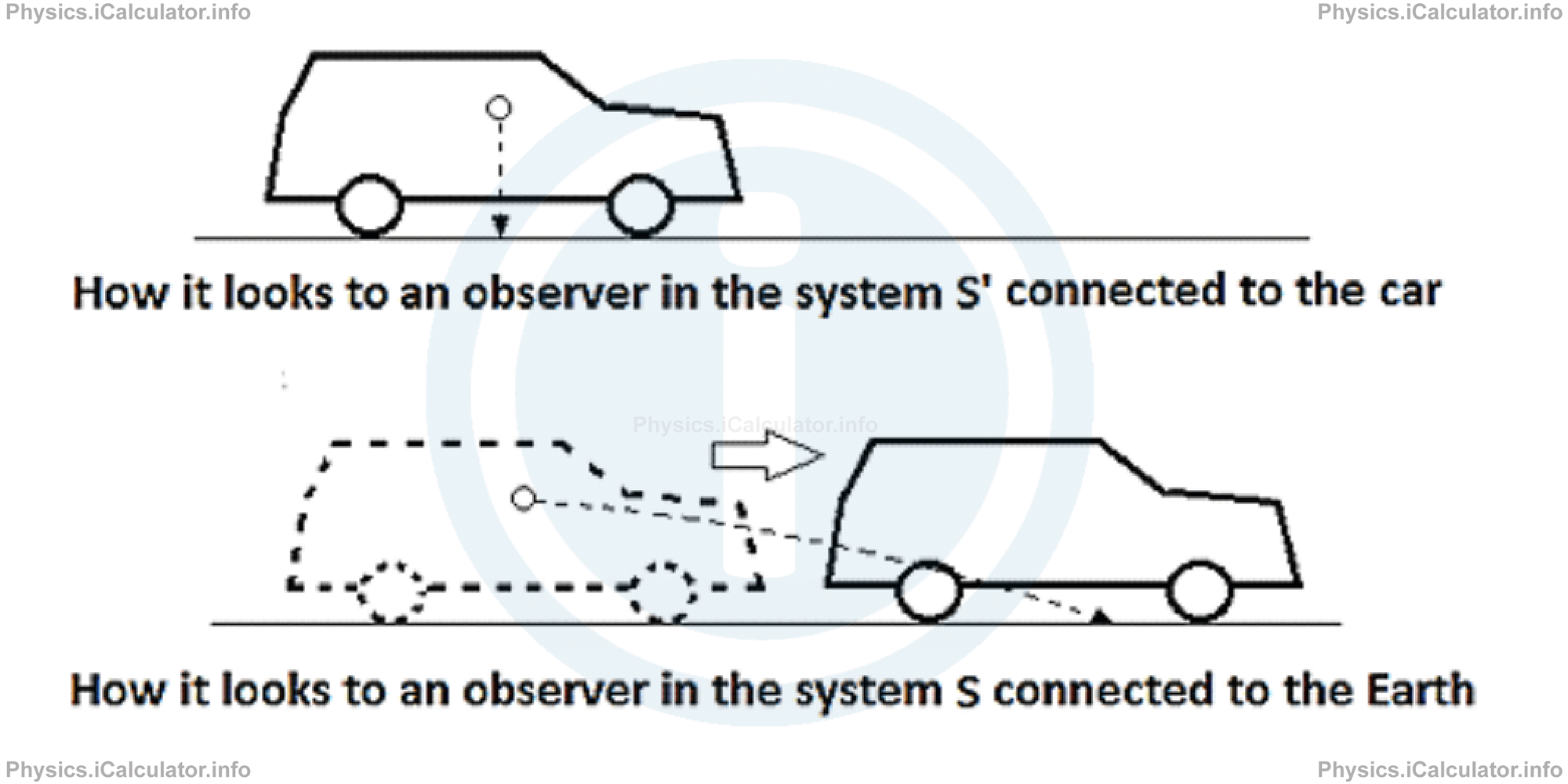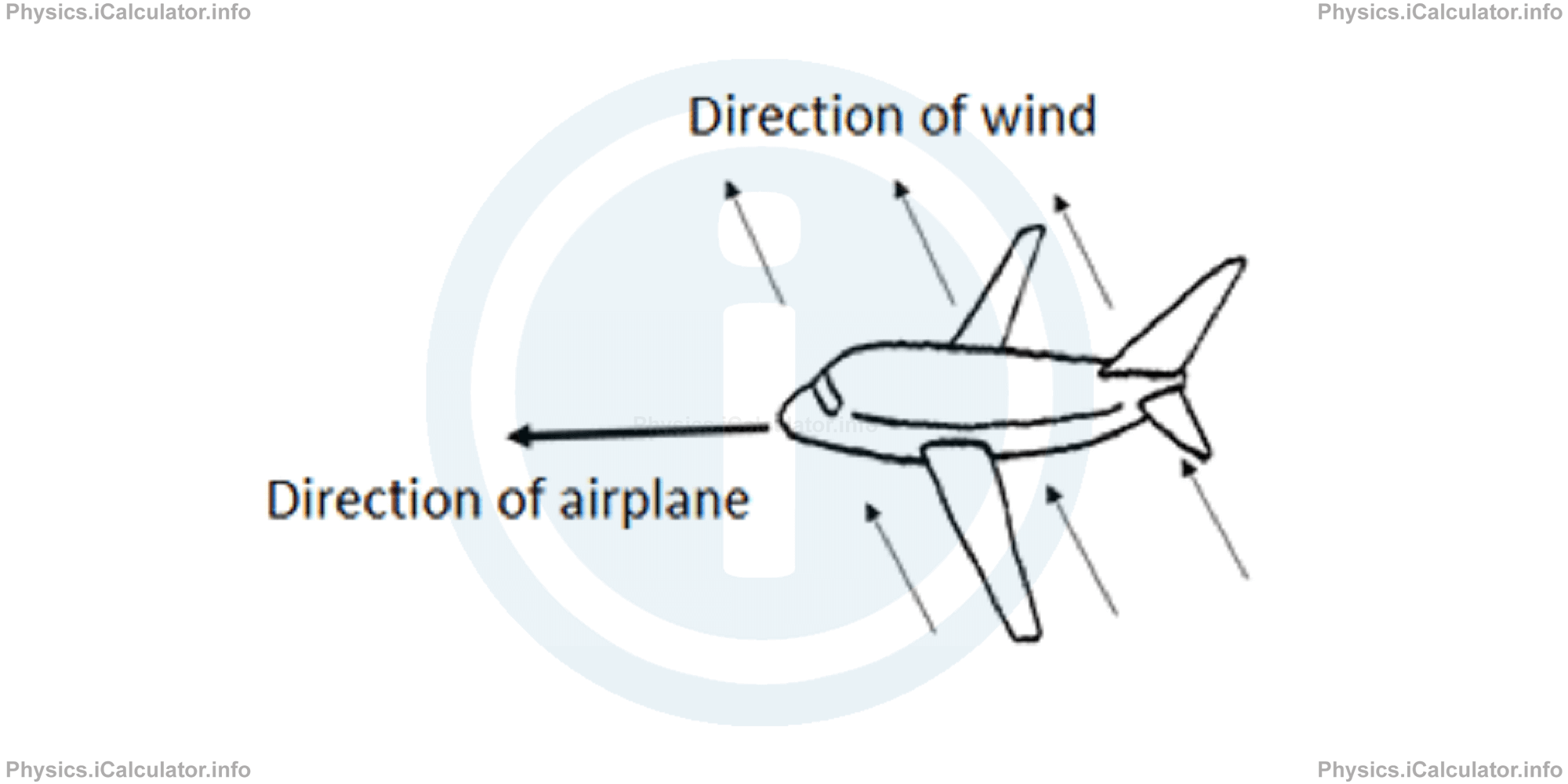Menu
Physics Lesson 18.2.3 - The Classical Principle of Relativity
Please provide a rating, it takes seconds and helps us to keep this resource free for all to use
Welcome to our Physics lesson on The Classical Principle of Relativity, this is the third lesson of our suite of physics lessons covering the topic of Classical Principle of Relativity, you can find links to the other lessons within this tutorial and access additional physics learning resources below this lesson.
The Classical Principle of Relativity
So far, we discussed about a number of inertial systems' features. Now it is clear that in inertial systems of reference, the Newton's Laws of Motion (including the Gravitational Law of Attraction) are applied. Moreover, we found that the transformation formulae regarding the coordinates and velocity when switching from one inertial reference system into another, contain the relative velocity V, which is the velocity by which an inertial system moves in respect to another inertial system (usually one of these systems is assumed at rest and the other as moving at constant velocity V).
However, it is easy to detect that the absolute velocity (v in the system S and v' in the system S') of a certain particle is irrelevant in the coordinates transformation formulae. Let's explain why. For this, we use again the figure of the first paragraph.
Let's suppose that at a certain time instant t, the particle has the velocity v⃗ (at S) and v⃗' (at S'). Now, we take a very small time interval Δt, similar to that taken when discussing the Galilean transformations of velocity. The particle will move from position P to a new position P'. Again, here the x-component of velocity in the two systems, S and S' has changed in the following way:
Giving that the relative velocity V between the two reference systems is constant, we obtain for the acceleration after dividing the above equations by the time interval Δt and taking the limit when ∆t → 0:
Therefore, we have
From the above equation, we conclude that the acceleration remains constant; no matter how the motion is made. Thus, we say that "acceleration (unlike position and velocity) is an absolute quantity (just like the time t) in all inertial systems of reference." In other words, acceleration in independent from the system it is measured for the same particle's motion.
On the other hand, the mass m of this particle does not change when switching from one inertial system of reference to another. Therefore, the force acting on the particle is constant as well, based on the Newton's Second Law of Motion, F = m · a. This means the force F, which describes the intensity of interaction and makes the particle deflect from the standard motion, is constant in inertial systems of reference - a conclusion we have also drawn in the previous tutorial. Therefore, the general equation of dynamics (2nd Newton's Law of Motion) and the Law of Inertia (1st Newton's Law of Motion) are the same for all inertial systems of reference.
Example 2
From the Galilean Transformations prove that
where r12 is the position of a particle 2 in respect to another particle 1 in the system S and r12' is the same thing but in the system S'.
Solution 2
From the Galilean Transformations for coordinates, we have for the first particle:
y1' = y1
z1' = z1
and for the second particle:
y2' = y2
z2' = z2
From the equation of distance between two points:
we obtain
= [(x2-V ∙ t) - (x1 - V ∙ t)]2 + (y2 - y1 )2 + (z2 - z1 )2
= (x2 - x1)2 + (y2 - y1)2 + (z2 - z1)2 = r212
All these facts are demonstrations for the full equivalence of all inertial systems in regard to mechanical (kinematic and dynamic) phenomena. From here, we attain the definition of the Classical Principle of Relativity:
All mechanical phenomena have the same features in all inertial frames (systems) of reference because the laws of mechanics have the same form for all of them.
Neither the absolute velocity nor the relative velocity of inertial systems to each other have no any role in mechanical-related phenomena. We can assume any of systems at rest and the other in uniform motion to it; we just have to use the proper system of equations derived from Galilean transformations for inertial systems.
We use to make all observations and calculations based on systems connected to Earth and therefore, we consider it as a system at rest. Suppose you are at a billiard hall playing with your friend. You see that many principles of dynamics like collisions, reflections, spinning, etc., are applied during the match. If you play the same game inside a ferry sailing at constant velocity on still water, all the above-mentioned principles of dynamics are still applied. Whatever value the velocity of ferry may have, no change in the laws governing the motion of balls is will occur; everything would happen as the event took place at the billiard hall on the ground we mentioned earlier.
Now, let's clarify an important point to avoid any confusion. Suppose one releases a ball from the window of a car moving at constant velocity. In the system S' connected to the car, the ball falls vertically down due to the pulling effect of gravity. However, if the same event is observed by another observer who is at rest in respect to the ground, he sees the trajectory of the ball is parabolic as shown in the figure below.

Is there any violation of the laws of mechanics in this case? Absolutely not! The Newton's Laws are applied in both systems. We already know that the only force acting on the ball is the downward force caused by gravity. Therefore, in absence of air resistance, the horizontal component of velocity is constant in both systems (0 in the system S' and vCar in the system S). Therefore, since the change in ball's trajectory comes due to the change in its horizontal component, there is no violation of the laws of mechanics in this case. Once again, we must stress that we are not able to say anything for the state of motion of a system if we are inside an inertial system of reference; we can assign any velocity to objects moving on it - even zero. Just we must pay attention the velocity do not exceed the ultimate speed (the speed of light in vacuum), for which we must discuss more extensively in the next paragraph.
Example 3
An airplane has a velocity of 1000 km/h in still air. It is flying on a windy day, where the wind velocity is 20 km/h and is directed perpendicular to the moving direction of airplane. Calculate:
- The magnitude of airplane velocity for an observer at rest on the ground and for the pilot
- The deflection in airplane's direction because of the wind existence when viewed from Earth

Solution 3
- The observer at ground sees a diagonal trajectory of airplane, whose components are the values provided in the clues. Thus, we have: v1 = √v2airplane + w2windAs you see, the change in velocity is very small (only 0.2 km/h or 0.02 % of the airplane's velocity). This is the reason why we often neglect the effect of wind in such problems.
= √10002 + 202
= 1000.2 km/h - The angle θ of airplane's deflection because of the wind existence is calculated through its tangent. Thus, tanθ = vwind/vairplaneTherefore, we obtain for the deflection angle θ:
= 20 km/h/1000 km/h
= 0.02θ = arctan(0.02)
= 1.150
You have reached the end of Physics lesson 18.2.3 The Classical Principle of Relativity. There are 5 lessons in this physics tutorial covering Classical Principle of Relativity, you can access all the lessons from this tutorial below.
More Classical Principle of Relativity Lessons and Learning Resources
Whats next?
Enjoy the "The Classical Principle of Relativity" physics lesson? People who liked the "Classical Principle of Relativity lesson found the following resources useful:
- Classical Principle Feedback. Helps other - Leave a rating for this classical principle (see below)
- Relativity Physics tutorial: Classical Principle of Relativity. Read the Classical Principle of Relativity physics tutorial and build your physics knowledge of Relativity
- Relativity Revision Notes: Classical Principle of Relativity. Print the notes so you can revise the key points covered in the physics tutorial for Classical Principle of Relativity
- Relativity Practice Questions: Classical Principle of Relativity. Test and improve your knowledge of Classical Principle of Relativity with example questins and answers
- Check your calculations for Relativity questions with our excellent Relativity calculators which contain full equations and calculations clearly displayed line by line. See the Relativity Calculators by iCalculator™ below.
- Continuing learning relativity - read our next physics tutorial: Space and Time in Einstein Theory of Relativity
Help others Learning Physics just like you
Please provide a rating, it takes seconds and helps us to keep this resource free for all to use
We hope you found this Physics lesson "Classical Principle of Relativity" useful. If you did it would be great if you could spare the time to rate this physics lesson (simply click on the number of stars that match your assessment of this physics learning aide) and/or share on social media, this helps us identify popular tutorials and calculators and expand our free learning resources to support our users around the world have free access to expand their knowledge of physics and other disciplines.
Relativity Calculators by iCalculator™
- Energy Calculator In Relativistic Events
- Frequency Calculator During Doppler Effect In Relativistic Events
- Length Calculator In Relativistic Events
- Lorentz Transformation Of Coordinates Calculator
- Lorentz Transformation Of Velocity Calculator
- Mass And Impulse Calculator In Relativistic Events
- Time Calculator In Relativistic Events
- Velocity Calculator In Relativistic Events